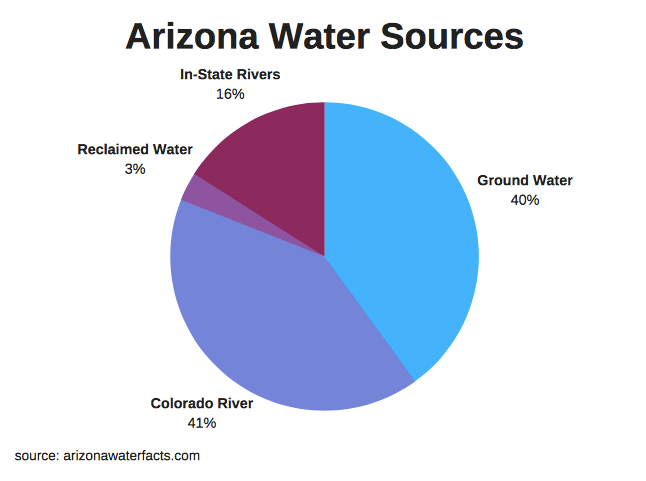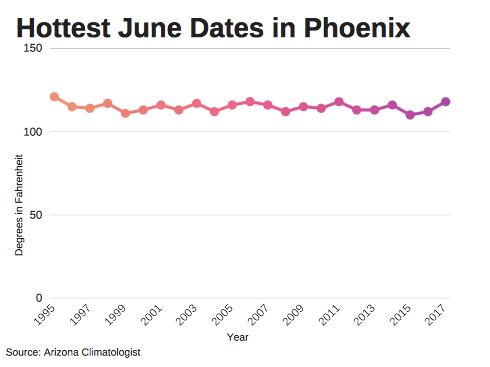
By Daniella Rudoy
PHOENIX—Arizona might not be next in line for a deadly hurricane, but the climate change provoking these monster storms will have statewide consequences, ranging from fires to vanishing water resources.
Almost 40 percent of Arizona’s water supply comes from ground water, and with climate change causing an increase in temperatures, this water will start disappearing, meaning dry places like Arizona will only get drier.
Isotope geochemist and environmental scientist Cara Thompson points to a similar case in California and has serious concerns about what is in store for Arizona.
“Owens Lake in California dried up from a lack of water in the state,” Thompson recounted. “As a result of drier ground, the water dried up, exposing dirt that used to be underwater, to air. Every time the wind blew, the dirt blew away with it, which results in air pollution and becomes a serious health hazard.”
According to Thompson, Arizona’s fate is a similar one. She explains that as temperatures continue to skyrocket on their climate-change-induced climb, water resources in Arizona will start to vanish, exposing sediment to the wind and directly resulting in an increase of dust storms and air pollution.
Experts are not the only ones concerned about the well-being of the state.
Kevin Lane, a junior at Arizona State University’s School of Sustainability, fears for Arizona’s “livability.”
“Phoenix is predicted to be unlivable before 2100,” Lane says. “Phoenix is relatively lucky because, for being a desert, it has expansive underground aquifers but those are drying up.”
According to Lane, climate change in Arizona means less snowfall in the Rockies, which directly affects the level of water flowing through the Colorado River. Arizona siphons off the river to store water in man-made aquifers.
Lane explained that use of the river will eventually have to be reduced, bringing about an increased dependency on the natural underground aquifers that “take thousands of years to refill”. Once the aquifers start drying up, Phoenix won’t have a steady source of water to survive.

Climate change is directly affecting water availability; the frequency of dust storms and summer heat waves will result in unbearable living conditions, eventually forcing residents out of Arizona.
President Trump and his administration have repeatedly brushed off the notion of climate change, blaming the Chinese or scheming scientists for creating the hoax, but Thompson says this couldn’t be further from the truth.
“As a scientist, when I talk about climate change, I don’t have a goal in mind other than getting as close as I can to fact,” said Thompson. “Scientific method isn’t biased; it isn’t politically motivated.”
Thompson says she would need “a background in psychiatry” to understand what additional information climate change deniers require to be convinced.
“You see the facts, you see the data, what more do you need?” she questions. “Maybe it’s a personal experience, like the people experiencing Harvey and Irma. I just wish there was a way other than people losing lives and property to finally believe that this is
happening.”
State climatologist Nancy Selover does not dismiss the notion of climate change and its effects on Arizona. Instead, she sees the challenges as a test run.
“In Arizona, because we are a desert, we have extreme weather as part of the definition in terms of extreme heat and extreme rainfall,” Selover said. “We need to be using the heat waves that we’re seeing, and the drought that we’re in, and the heavy monsoon activity we’ve seen the last few years, as test cases for figuring out how to cope with those things.”

Selover explains that extremes are inevitable.
“My take on it isn’t that we don’t have a problem,” Selover clarified. “It’s that we need to figure out ways to adapt to it, how to live with it, how to make it work for us.”
Arizona is an expert at battling scorching temperatures and extreme weather, and Selover is convinced the state will remain victorious.
Originally from Los Angeles, Daniella is currently getting a degree in broadcast journalism and public relations at Arizona State University. You can always find her either at the gym, watching Netflix, or day-dreaming about the beaches back home.







[…] My article was picked up by Green Living Magazine; you can read the full story here. […]